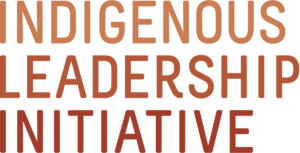UN Biodiversity Reports Call for Greater Role for Indigenous Peoples
By Frank Brown
The United Nations released two major reports recognizing the leadership of Indigenous Peoples in sustaining our planet. The reports look at the fragile state of nature. Together they illustrate what place-based peoples have known all along: everything is interrelated. If we burn through natural resources, we undermine our own futures. Yet if we relate to the natural world in a thoughtful way, the beings from the land and water such as herring, salmon, caribou, and moose will remain—not just for us but for generations to come.
These fundamental truths have given rise to powerful solutions for sustaining biodiversity. Indigenous Nations across the country are creating Indigenous Protected and Conserved Areas—huge refuges for animals and plants. We are operating Indigenous Guardians programs to care for lands and waters.
These Indigenous-led initiatives have become a model for Canada and a gift for the world.
They offer our best opportunity to ensure our grandchildren inherit a planet that nurtures and sustains them. By placing Indigenous-led conservation at the center of its biodiversity strategy, Canada can help conserve lands on the scale that nature and humans require. And by implementing the UN Declaration of the Rights of Indigenous Peoples in Canada, we can make a shift from colonial models of conservation to ones that are more respectful and equitable and that support reconciliation.
I come from Bella Bella along the Pacific Coast. It’s a beautiful place with incredible biodiversity and cultural diversity among First Nations. Yet even here we see the danger signs—declines in salmon, the red cedar in danger of going extinct, and ocean acidification. But as Indigenous Peoples, we have knowledge systems developed over hundreds of generations that help address these challenges.
This is why UN researchers are calling for greater respect and support for the role of Indigenous Peoples in conservation.
Nuxalk Guardian Watchmen, Credit: ’Qátuw̓as Brown
Indigenous Guardians a Bright Spot in a Grim Report
The first UN report, the United Nations Global Biodiversity Outlook, offers a report card on international efforts to sustain biodiversity. It concludes that countries are failing on most fronts. And while the report outlines many successes, they don’t measure up to the challenge before us. It calls for scaling up solutions, including expanding protected areas and strengthening the role of Indigenous Peoples in biodiversity strategies.
The report highlights Indigenous Guardians. Over 70 Indigenous Guardians programs manage lands and waters across Canada. Guardians serve as eyes and ears, supporting stewardship for their Nations. They restore animals and plants, manage protected areas, and monitor development projects. They are on the frontlines, collecting data that informs strategies for addressing biodiversity loss and climate change. Canada invested $25 million in a pilot National Guardians Network. Added support will help more Indigenous Nations to launch their own Guardians programs as well.
Bella Coola, BC, Credit: ’Qátuw̓as Brown
Indigenous-led Conservation Builds Momentum in Canada
Because Indigenous Peoples and local communities play such a pivotal role in sustaining biodiversity, the UN released a companion report called the Local Biodiversity Outlook. It finds that one of the main reasons the world has failed to meet its biodiversity targets is the failure to recognize the vital contributions Indigenous Peoples and local communities make to conservation.
It calls for putting the cultures and rights of Indigenous Peoples and local communities at the heart of the next round of biodiversity strategies. And it urges governments and other groups to support Indigenous Peoples and local communities’ efforts to protect their lands and waters and secure their customary tenure and rights.
The report points out success stories, including several from Indigenous Nations in Canada. It celebrates Pimachiowin Aki, in the boreal forests of Manitoba and Ontario. Four Anishinaabe First Nations—Bloodvein River, Little Grand Rapids, Pauingassi and Poplar River—led the creation of this 29,040-square-kilometre UNESCO World Heritage site in 2018. It also highlights the Cree Nation’s plans to protect 30% of their traditional territory—80,000 square kilometres of intact boreal forest and wetlands.
The UN Report also notes that Canada invested in over 25 Indigenous Protected and Conserved Areas in 2019. If Canada places Indigenous-led conservation at the core of its biodiversity approach, we can sustain even more lands and waters.
The UN reports are a call to action. Indigenous Nations have asserted our inherent responsibility to lands, waters and resources by establishing IPCAs and Guardians programs. Now our allies, including federal, provincial, and territorial government should make a renewed, long-term commitment and investment in this work.
The pandemic, the wildfires, the flooding are all the indicators of why we must do better. We must all work together to make the real changes we need for the health of our future generations.



